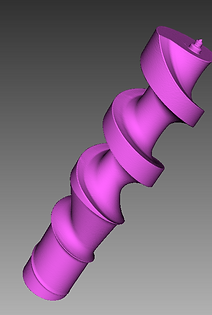
3D Laser scanning services & As-Buit Surveys
We rebuild the geometry of elements and infrastructures using 3D laser scanner technology
Reverse engineering
Reverse engineering is the process of reproducing a piece by extracting surfaces or sketches in a cloud of scanned points or in a mesh to create a CAD model of the piece. The product reflects how the piece was originally designed. Reverse engineering is becoming a more popular method to create a 3D model of a piece that does not have previous CAD files. This process has saved many professionals and companies time and costs, as well as an increase in the quality of the design processes and the time of commercialization.
Laser scanning produces a cloud that consists of millions of points in 3D space. These 3D points can easily be converted into an STL file to be used to preserve your data or to print in 3D at any scale. However, mesh data by themselves can not be easily edited or manipulated without highly specialized software. Using software you can completely convert 3D scanned data into a useful parametric CAD model. With the parametric model you can open the model with an editing software (eg SolidWorks), access the feature tree and easily edit sketches and design features.
The 3D scanner is ideal for reverse engineering. The collected data is projected as a point cloud, which is a three-dimensional image of the scanned object. This allows us to create virtual sets that allow detecting the overlap and check the fit of the pieces.
A 3D scanner can be used to scan / analyze a real-world object or environment to collect data about its shape and possibly its appearance (color and / or texture). The collected data can be used to build a 3D digital model.
Our work process:
Once we have scanned the piece, our 3D modeling specialists will start working with the point cloud to create a Solid Model. The resulting models can be imported into almost any CAD software package such as AutoCad, Solidworks, Inventor, etc. The models can be used to generate custom drawings or to manufacture spare parts. 3D printing / machining solutions will also be analyzed based on your need and the materials of the piece.
Considerations for the process:
-
Size of the piece Reflectivity of the piece.
-
Accessibility of the piece: scanned on the site? It's in use?
-
Desired deliverables
-
The Chronogram of the project
Benefits of 3D scanning:
-
Highly accurate results Measure and model unique pieces.
-
Easily create replicas or manufacturing molds
-
Cost savings: capture / modeling leads from conceptualization to manufacturing quickly
-
Digital documentation of your parts in case of failure.


Reverse engineering of mechanical elements and industrial parts


Reverse engineering by scanning sets of parts - consumption
Phases of the reverse engineering process:

Capture of surface information by laser scanner

Cloud of points with texture and original color

Aligning debugged scans to generate point cloud

Generation of exportable parametric format meshes
